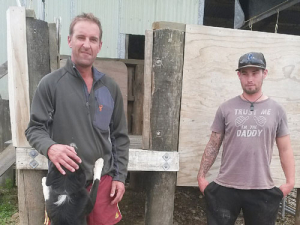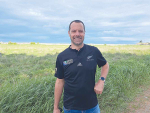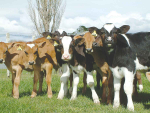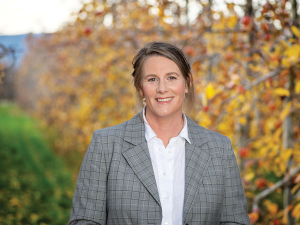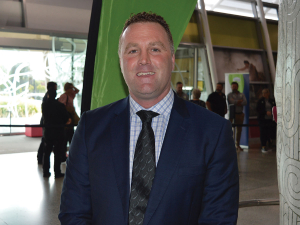Building their own calf loading facilities has resulted in better biosecurity and smoother loading for Otorohanga farmer Greig Furniss and his herd manager Tom Orlowski.
Furniss and Orlowski were sparked into action after attending a DairyNZ discussion group about the new calf welfare regulations in April last year. They went home and built a loading ramp and raised pen in time for last calving season – well ahead of the new rules coming into effect this August.
It took them and a helper three to four days to build their loading facilities, working three to four hours a day, and they estimate it cost $2000-$3000.
“There are several farm supply companies offering them as kitsets and fencing contractors are building them too,” says Furniss.
“But they’re relatively expensive and if you buy a kitset, you have to assemble it anyway, so we decided to build our own.”
Basing their design on DairyNZ specifications they bought some of the building materials and recycled others they had on-farm. They constructed a sturdy 2.4 sq m loading ramp, leading to a covered, raised pen. This pen comfortably holds 15-20 calves, depending on breed and size.
“We rarely send more than a dozen calves at a time though, so our calves have plenty of room,” says Furniss.
Orlowski says the new facility worked a treat last season and made their transporter’s job so much easier. At 1.2m from the ground, the holding pen is designed to align with the back of the truck, so the pen is level with the trailer deck.
“The driver just opens the pen gate and the calves walk into the truck,” says Orlowski.
Having a ramp and holding pen has also improved biosecurity on the farm.
“Before we had the loading facility, drivers would be coming and going in the shed with dirty boots and lifting stock onto the truck,” says Furniss. “They’d already been to several other properties, so there was always a risk that infection could be spread from one place to another. The new loading arrangements remove that risk.”
Furniss’ advice to other farmers is to make sure their loading facilities are constructed sturdily. It’s a good idea to ‘overbuild’ to withstand wear and tear, he says.
The new rules
New regulations for loading and unloading young calves come into effect on August 1.
Any farmer who sends calves off-farm for sale or slaughter, as well as transport operators and meat processors of young calves, will have to:
- Provide suitable shelter for young calves before and during transportation, and at points of sale or slaughter
- Provide and use loading and unloading facilities when young calves are transported for sale or slaughter, or as a result of sale.
• Article first appeared in Inside Dairy June 2017 issue.

